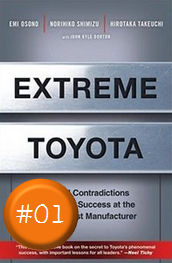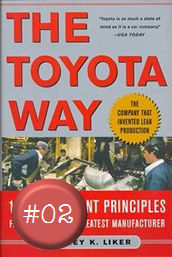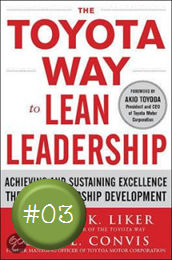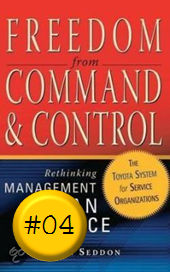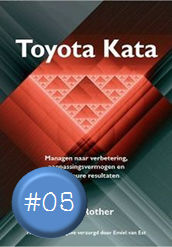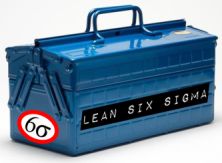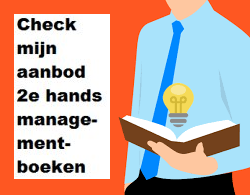Frank Buytendijk hekelt in zijn boek "Dealing with dilemmas" de westerse oplossingsgerichte probleemaanpak en bepleit hij problemen eerst goed te begrijpen alvorens ze op te (kunnen) lossen. Prijs jezelf gelukkig als je hierbij een dilemma tegenkomt, omdat dit erop wijst dat je de essentie van het probleem te pakken hebt.
Onderstaande fragmenten vatten - voor mij in ieder geval - de essentie van het boek goed samen:
If you are not part of the solution, you are part of the problem,” and “Don’t bring me problems, bring me solutions” are executive mantras that can be heard all over the Western world. Western management culture has a solution-oriented view on problems. Oops, sorry; I am not even allowed to say ‘problem.’ I should refer to it in a more positive way and call it a challenge.
We live in the 80/20 rule, where we realize that 80% of a solution can be realized in 20% of the time, while the remaining 20% of the solution would cost 80% of the time. We state that “better is the biggest enemy of good.” We are action-oriented. Time is money. Any decision better than no decision. Keep it short and simple.
I find this type of management culture worrying if not downright scary. If we jump to conclusions and implement the first solution we think of, do we really understand the problem (not challenge!) at hand? Ar we not trading in one problem for the next, which we then quick-fix, too? You may argue that there is a well-known rule here: the law of conservation of misery. It says that for each problem you solve, at least one new problem is created, or as many new problems that together equal the trouble caused by the original problem.
(…) Trying to solve a problem without a true understanding of it leads to “solutions” that are reactions. Reactions tend to magnify the problem (by throwing money at it, or imposing even more regulations), or lead to exchanging one problem for the opposite problem, or create a vicious circle. Only if you do see the true cause of the problem, you can move to a higher level of understanding.
At the core of many thorny problems that somehow keep repeating themselves lies a dilemma – a difficult choice of some sort. If you delve deep enough, it becomes apparent that there is no simple solution. (…) But not understanding, seeing, or aknowledging a fundamental dilemma underlying your problem will not make it go away. At least a dilemma forces you to stop and think about the consequences of what you are going to decide, and equally important, the consequences of what you are deciding against.
I think managers should be happy facing a dilemma – it is a sign they have actually developed an understanding of the problem at hand.
Buytendijk definieert een dilemma als: a situation requiring a choice between equally undesirable or unfavorable alternatives. It is a state of things in which evils or obstacles present themselves on every side, and it is difficult to determine what cource to pursue.
Six dilemmas can be found in every business:
- Value or profit
- Long term or short term
- Top down or bottop up
- Listen or lead
- Inside out or outside in
- Optimize or innovate
On closer examination, the dilemmas (…) can be classified in two types: the ones that highlight conflict between parties (you versus me) and the ones that separate the long term from the short term (now versus later). Each type of dilemma has its own way of being adressed.
You-versus-me dilemmas
You-versus-me dilemmas requiring synthesis, looking not for what divides the conflicting sides, but for what binds them. (..) In terms of Jim Collins, you-versus-me dilemmas benefit from having the genius of the and.
Now-versys-later dilemmas
Now-versus-later dilemmas require a different approach. They are about creating options. It means making sure that whatever the future brings, you can flexibly deal with it and still reach your goals. Organizations need to be ambidextrous in nature, minding both the short and the long term at the same time. With only a long-term view, the organization might not actually realize its long-term vision, while short-termism alone endangers future success.
I have found three elements to be important in resolving you-and-me-dilemmas. These are elements, not steps, because all three of them may take place at the same time, and in the process of resolving the dilemma, you may revisit them multiple times. You need to (1) examine your motives, (2) communicate, and (3) try to reconcile the opposites.
Scenario planning
One of the most important methodologies for creating options for the future: scenario planning. (…) Scenario planning is a tool for ordering one’s perception about alternative future environments in which one’s decisions might be played. The least important goal of scenario planning is to be right about the future. (…) It helps to think of the future performance not as a single plan to stick to, but as a number of options. Once the future plays out, they need to be recognized. If we opened our eyes to change, which is the most important goal of scenario planning, we would recognize these different directions – whatever they may be – a bit better. Seeing only what we are used to seeing is deeply rooted in human behaviour. Training yourself to think in terms of scenarios and options broadens your horizon, and creates a prepared mind. People experienced in thinking in terms of scenarios will be less likely to stick to an established strategy even if reality is moving in a different direction. Secnario planning by itself, regardless of the outcome, may very well have a positive effect on the decision-making process.








